- SilverWare
- Wooden Furniture & Craft
- Wooden Nautical Gift
- Wooden Block
- Wooden Rehal[Book Reading]
- Wooden Table Corner
- Wooden Incense Stick Burner
- Wooden Cutlery & Cigar Pipe
- Wooden Almira
- Wooden Walking Stick & Stand
- Wooden New Development Furniture
- Wooden Lamp
- Wooden Dinning Set
- Wooden Chess & Game Box
- Wooden Chess
- Wooden Mango Wood European Style Furniture
- Wooden Extension
- Wooden Drawer
- Wooden Meena Work Antique
- Wooden Teak Wood European Style Furniture
- Wooden bed side
- Wooden Photo Frame
- Wooden binary table
- wooden bench
- Wooden Office Desk
- Wooden Jewellery
- Wooden Swing
- wooden drawer chest
- Wooden Tvc
- Wooden Stationary
- Wooden Table Piller
- wooden wine bar
- Wooden Mislinius Furniture
- Wooden Pen Holder & Pen Box
- Wooden Box
- wooden chair
- Wooden Screen
- Wooden House Hold Product
- Wooden Ash Tray
- Wooden Side Board
- Wooden Mirror Frame
- Wooden Coaster
- Wooden Candle Stand
- Wooden Table Octangle
- ALUMINIUM
- Musical Instrument
- Stallone Pig Bristle
- Rugs & Carpet
- Stone Product
- IRON WARE
- Zinc Oxide
- GUAR GUM
- Brass Nautical & Marine Re-Production Instrument
- Brass Clinometer
- Brass Abney Level
- Brass candle stand
- Brass Ship Clock
- Sailers Wheel
- Brass Microscope
- Brass Flower Base
- Brass Ship Telegraph
- Brass Ship Anchor
- Brass Porthol Window
- Brass Photo Frame
- Brass Sextant
- Brass Mix Nautical Gift
- Brass Weather Instrument
- Brass Ashtray
- Brass Sand Timer
- Brass Boat Horn
- Brass Ship Bell
- BRASS CHRISTMAS DECORATIVE
- Brass Theodolite
- Brass Divider
- Brass Vernier Caliper
- Brass Kitchenware
- Brass Surveying Level
- Brass Nautical Key Chain
- Brass Pully [Reel]
- Brass Napkin Ring
- Brass Diving Helmet
- Brass Magnifier
- Brass Rain Guage
- Brass Bottle Opener
- Brass Ship Lamp
- Brass Compass
- Brass Lamp
- Brass T Light Holder
- Brass Globe
- Brass Porthol Mirror
- Brass Binoculers
- Brass Search Light
- BrassWare New Range
- Brass Flag Hook
- Brass Measurement Tape
- Brass Telescope
- Brass Gong
- Medieval Armoury
- Bronze Statue
- Home
- About us
- ShopNew

50% OFF FOR
New collection
Free shipping & free returns on dresses

Hot week
Discover the selection
Shipping worldwide only 5 days - Executive Member
- Contact us
- SilverWare
- Wooden Furniture & Craft
- Wooden Nautical Gift
- Wooden Block
- Wooden Rehal[Book Reading]
- Wooden Table Corner
- Wooden Incense Stick Burner
- Wooden Cutlery & Cigar Pipe
- Wooden Almira
- Wooden Walking Stick & Stand
- Wooden New Development Furniture
- Wooden Lamp
- Wooden Dinning Set
- Wooden Chess & Game Box
- Wooden Chess
- Wooden Mango Wood European Style Furniture
- Wooden Extension
- Wooden Drawer
- Wooden Meena Work Antique
- Wooden Teak Wood European Style Furniture
- Wooden bed side
- Wooden Photo Frame
- Wooden binary table
- wooden bench
- Wooden Office Desk
- Wooden Jewellery
- Wooden Swing
- wooden drawer chest
- Wooden Tvc
- Wooden Stationary
- Wooden Table Piller
- wooden wine bar
- Wooden Mislinius Furniture
- Wooden Pen Holder & Pen Box
- Wooden Box
- wooden chair
- Wooden Screen
- Wooden House Hold Product
- Wooden Ash Tray
- Wooden Side Board
- Wooden Mirror Frame
- Wooden Coaster
- Wooden Candle Stand
- Wooden Table Octangle
- ALUMINIUM
- Musical Instrument
- Stallone Pig Bristle
- Rugs & Carpet
- Stone Product
- IRON WARE
- Zinc Oxide
- GUAR GUM
- Brass Nautical & Marine Re-Production Instrument
- Brass Clinometer
- Brass Abney Level
- Brass candle stand
- Brass Ship Clock
- Sailers Wheel
- Brass Microscope
- Brass Flower Base
- Brass Ship Telegraph
- Brass Ship Anchor
- Brass Porthol Window
- Brass Photo Frame
- Brass Sextant
- Brass Mix Nautical Gift
- Brass Weather Instrument
- Brass Ashtray
- Brass Sand Timer
- Brass Boat Horn
- Brass Ship Bell
- BRASS CHRISTMAS DECORATIVE
- Brass Theodolite
- Brass Divider
- Brass Vernier Caliper
- Brass Kitchenware
- Brass Surveying Level
- Brass Nautical Key Chain
- Brass Pully [Reel]
- Brass Napkin Ring
- Brass Diving Helmet
- Brass Magnifier
- Brass Rain Guage
- Brass Bottle Opener
- Brass Ship Lamp
- Brass Compass
- Brass Lamp
- Brass T Light Holder
- Brass Globe
- Brass Porthol Mirror
- Brass Binoculers
- Brass Search Light
- BrassWare New Range
- Brass Flag Hook
- Brass Measurement Tape
- Brass Telescope
- Brass Gong
- Medieval Armoury
- Bronze Statue
SA0236 Maximilian Close Helmet
Maximilian Close Helmet
Maximilian Close Helmet
Maximilian (as in Maximilian II) plate armor represents a combination of Italian and
German styles and is characterized by use of fluting and metal folds for lightness
and strength. Maximilian II was the Roman Emperor from 1564–76. Armor from the
Mid to Late 16th Century is commonly referred to as Maximilian period armor. It
was considered to be the pinnacle of the armor achievement. It represents
centuries of experience in the armouror’s craft. It had heavy fluting for strength
combined with smooth surfaces and graceful lines. This provided outstanding
protection while minimizing weight. The armor from the Maximilian period is
considered the best. Maximilian armour is a modern term applied to the style of
early 16th-century German plate armour associated with, and possibly first made
for the Emperor Maximilian I. The armour is still white armour, made in plain
steel, but it is decorated with many flutings that may also have played a role in
deflecting the points and blades of assailants and strengthening the structural
strength of the plates. It is a transitional stage in the decoration of armour, after
the plain steel surfaces of 15th-century armour and before the elaborate
decoration and colouring with etching and other techniques of Renaissance
armour. The armour is characterized by armets and close helmets with bellows
visors; small fan-shaped narrow and parallel fluting—often covering most of the
harness (but never the greaves); etching; work taken from woodcuts; sharply
waisted cuirasses, and squared sabatons.
Related products
Copyright © STALLONE OVERSEAS PVT. LTD. All rights reserved.
- Home
- About us
- ShopNew

50% OFF FOR
New collection
Free shipping & free returns on dresses

Hot week
Discover the selection
Shipping worldwide only 5 days - Executive Member
- Contact us




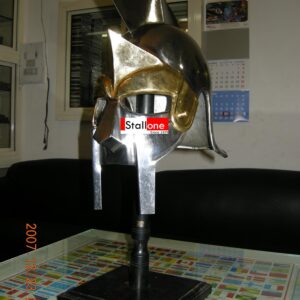
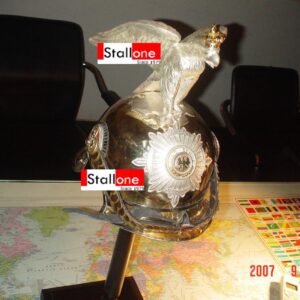
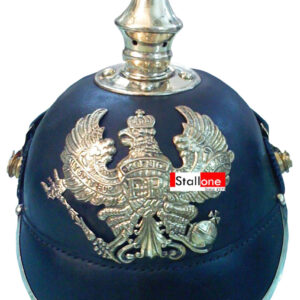
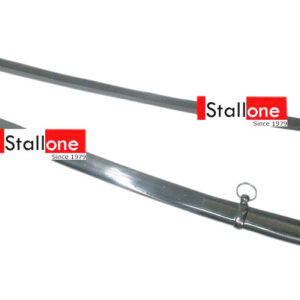
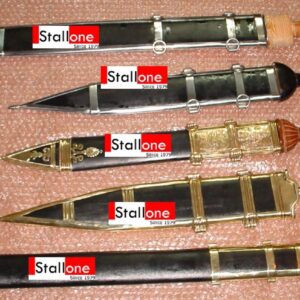
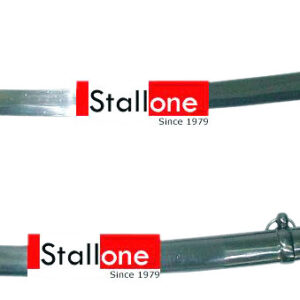
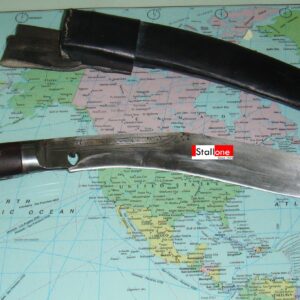
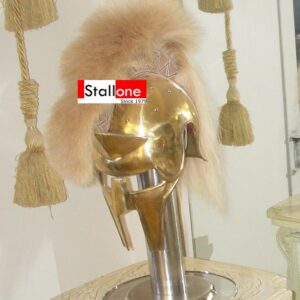
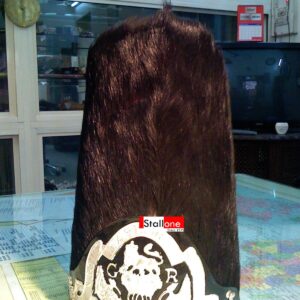
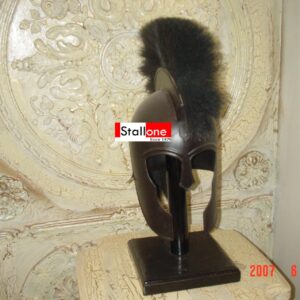
Reviews
There are no reviews yet.